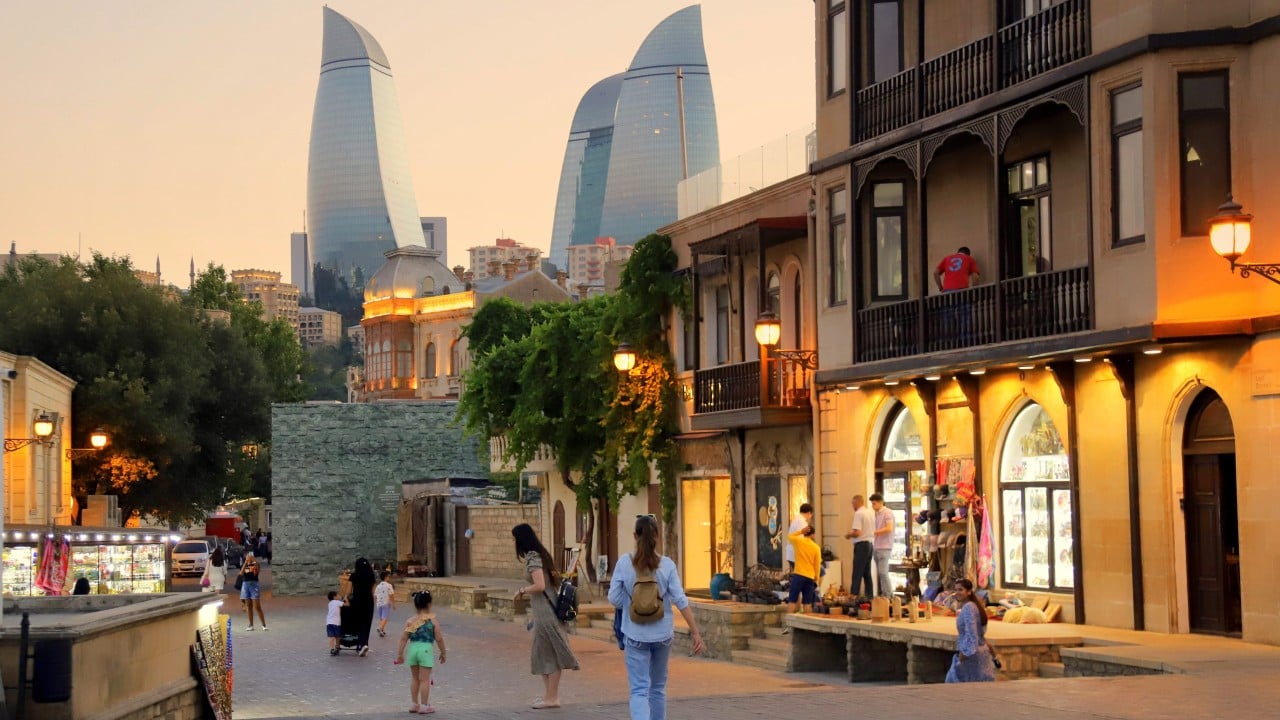Azerbaijan is the largest of the three former Soviet Socialist Republics sandwiched between the great Caucasus Mountains and, to the south, Iran and Turkey, and hemmed in by the Black and Caspian seas. The commercial exploitation of its vast oil reserves, which began in 1871, has helped the country develop faster than its neighbours, Armenia and Georgia. The largest city – and the national capital since 1920 – Baku stands along the long crescent of the Absheron Peninsula and is known as “the city of winds” because of its exposure to the strong gusts that sweep in off the Caspian Sea.
Also blowing over Baku have been the winds of change. Islam arrived from the south in the 7th century with the Arab conquest of the region, which was followed by the Persian and Ottoman empires. These behemoths battled for dominance and control in the Caucasus until a third great power, Tsarist Russia, muscled in from the north, taking complete control in 1828.

All of this history is reflected in the architecture of Baku. Take a walk on the cobblestones of the Old Walled City (Icherisheher, or “Inner City”) and you’ll pass the hammams, mosques, teahouses, caravanserais and sunken gardens that made Baku an important stop on the Old Silk Road. At the top of the walled city is the Palace of the Shirvanshahs, a confusing jumble of austere sandstone buildings that now houses a museum containing a collection of coins, copper utensils, costumery and carpets, decorations, musical instrument.
















